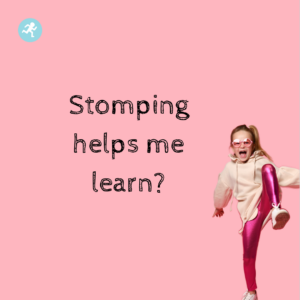As early childhood educators, we know intuitively that children who cannot settle their bodies and minds cannot learn. They disrupt their classrooms and cause challenges for their teachers and peers. And, this unsettled feeling makes school harder than it needs to be, breeding frustration rather than fostering a love of learning.
The best way to solve the problem of the wiggles is more moving and there are very easy ways to sneak more into the school day. For example, when it is time to transition, children can hop like rabbits feeding proprioceptive information to the brain, or bear crawl feeding the brain both proprioceptive and vestibular information. If children have to wait for the bathroom, consider yoga poses. These offer lots of proprioceptive and vestibular stimulation. When it is time to practice color recognition, have children throw sponge balls at all the things in the classroom that are red, blue, or yellow. For older children instead of colors, letters or numbers will work and this will not only feed a developmental sensory need but also check an academic box.
How long should we expect our students to sit before they need to move? A good rule of thumb is 2-3 minutes per year of life. So a 3-year-old can sit for 6-9 minutes and a 5-year-old for 10-15 minutes. Longer than that and their brains will make their bodies move in search of information about the world around them and how to operate in it.
Sometimes, we have forgotten that children today are hardwired the same as kids from the ‘70s, the ‘50s, the Victorian age even the Caveman days. But no matter what century they are born in, children’s brains learn their bodies a the same rate and pace they always have. We cannot speed this up. When young children can’t attend, or sit still, they can’t learn. Removing the physicality of play from their day is like giving them half of what they need to learn: half a chair, half a book, or half of the directions. It doesn’t make sense.
The beauty of all of this is, early childhood educators are masters of play. That is what we do best and we already know how important it is for appropriate development. Play-based, child-centered, outdoor play and big physical movement are more important now than ever, regardless of the pressure to put kids in seats. When we give children time to move in a big physical way, that movement allows the brain to learn how to use the body appropriately, leading to fewer frustrations all around. Big-body play satisfies the brain’s needs, builds a platform for learning, and wires the brain for success.
Resources

Ready for more?We come to you with professional development that is engaging, inspiring, and fun. What have past attendees said? “I attended your training this afternoon and absolutely loved it…This has been one of my favorite trainings…This is a game changer for teachers in regards to preventing challenging behaviors.” -Susan Scappaticci Early Childhood Coach, Gallatin and Nashville, TN. “Your session was the most engaging of the week.” – Heather H Speech Language Pathologist Kalamazoo, MI Get on our calendar here. |

Posters
The power of visuals is undeniable. Help the adults in your students’ world wrap their heads around the importance of big-body physical play for their social, emotional, behavioral, and academic journey!
Get your posters here.


What in the world do our posters mean?
We are happy to help you out! Learn more about the importance of stomping, somersaults, climbing, crawling, and spinning for classroom success here.
